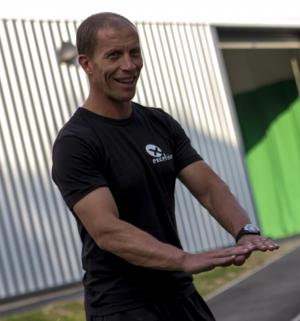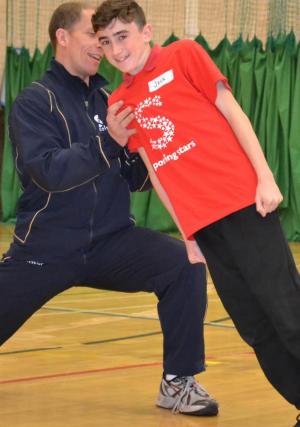Main Menu
Latest Blog Entry
User login
Hope, mindfulness and compassion
“Do you coach with compassion or for compliance?”
 Effective leaders bring out the best in people, they do this through inspiring hope,being mindful and coaching with compassion (1).
Effective leaders bring out the best in people, they do this through inspiring hope,being mindful and coaching with compassion (1).
That was one snippet from my recently completed 6 week course led by Richard Boyatzis called “Inspiring Leadership Through Emotional Intelligence”.
The premise of the course was to make us more aware of our own emotional states and how it impacts our decision making and interactions with others.
It showed ways of creating true empathy which genuinely opens up to the other person which is very powerful (The less effective empathy is seeing the other person through a reflection of yourself.)
It showed how inspiring hope and dreams are important coaching tools. Athletes respond to that and sometimes get caught up in what other people think they “ought to do” rather than what they “love to do” (2,3).
It showed how being mindful is important for my relationship with athletes (I can respond better to their needs and desires) and also for my own benefit (clarity of thought, renewal).
It was tough, with a bigger workload than expected, but well worth it.
“When we use the term compassion, we go beyond the typical Western interpretation to one coming from Confucian philosophy. Compassion is the experience of benevolence, of being open to others. It is caring for others who might be in pain (more hedonic) or those in joy (more eudemonic) or those in search of growth (eudemonic) (4).
Who has inspired you?
 Try this simple exercise: take 5 minutes out and write down a list of people who have inspired you throughout your life: Family, teachers, coaches, colleagues, friends.
Try this simple exercise: take 5 minutes out and write down a list of people who have inspired you throughout your life: Family, teachers, coaches, colleagues, friends.
Think about what was it they did that inspired you? Remember as much detail as possible, again write it down.
If you have done the exercise, well done. How did you feel when you were doing it? You will probably be feeling pretty good now.
You have activated the parasympathetic nervous system by thinking of positive emotional attractors. You are now in an open state of mind and have experienced some “Renewal“.
Our daily lives are filled with encounters and events that are quite stressful: being held on the phone, dealing with the National Governing Body that wants meaningless reports, stuck in traffic etc..
This activates the Sympathetic nervous system which is good when you need to focus on an essential task or deal with an immediate event. The downside is that it limits access to all of your neural networks and the excess cortisol produced hinders your immune system.
You become narrow minded and risk illness.
A daily dose of Renewal helps counter this: play, moderate exercise and learning new things are examples of how to activate your Parasympathetic system.
One of the discussion points on the course was what ratio do we need to have between the Positive Emotional Attractors (PEA) and the Negative Emotional Attractors (NEA)? We need to consciously build in PEA time due to the amount of NEA we experience (5). For me, it was about 5:5 normally and 8:2 if I am thriving.
Hearts, Minds & Bodies
 As a coach do you activate the PEA in your athletes or the NEA?
As a coach do you activate the PEA in your athletes or the NEA?
I have found myself in the past looking to “fix weaknesses” in athletes.
By focussing on their “problems” it means that I am less tuned into them as people.
I have tried now to win their hearts first by inspiring hope, then explain why we do what we do, then get their bodies to follow.
Some coaches are very good at this (e.g.Clay Erro) and create an environment where “eyes are shiny with the art of possibility“.
If you think of how NGBs often try to get their athletes to get fit, you will see how flawed it is.
- They put athletes through a series of fitness tests and then tell the athletes what they are bad at (NEA)
- They give out a bit of paper with some exercises with funny names on it. Give a quick demonstration (often by sports coaches who are poor at them) and say “do these at home “(compliance).
- See the athletes again in 6 weeks and tell them off for failing to do their homework! “They are not engaged“.
 They test the body, confuse the mind, and then break the heart! (This is why I refuse to work in that type of environment and have resigned from some contracts).
They test the body, confuse the mind, and then break the heart! (This is why I refuse to work in that type of environment and have resigned from some contracts).
The key to sustaining good effective coaching is building relationships. One way to do that is to focus on what people love to do rather than need to do. Find out what the athlete is good at and buiild from there.
Once trust is established, a shared vision can be created that is very strong and will lead to success (6).
Summary
I learnt huge amounts on this course. It enabled me to deepen my relationship with a lot of the athletes and coaches I work with. That has had immediate results in their performance which was unexpected.
I have also ditched some work that was just too negative. Life is too short to be dragged down by trolls!
The course had a balance of:
- video lectures
- extensive reading
- essay writing
- group discussion
- quite tough self reflection exercises
All of these were very useful, except the group discussions which were unwieldy due to the sheer amount of people involved. That could have been better structured.
I would recommend the course to all coaches: in fact it should be an essential part of every coaching course/ pathway. Far too many “coaches” are in fact “instructors“.
This course was hosted by Coursera and was my fourth MOOC follo
wing “Crash Course in Creativity”, “Data Visualisation and Infographics“, “How Things Work”.
I start “Exercise Physiology: Understanding the Athlete Within” next week.
References
- Goleman, D., Boyatzis, R., & McKee, A. (2001). “Primal leadership: The hidden driver of leadership. Harvard Business Review, December.
- Smith, M., Boyatzis, R.E. & Van Oosten, E. (2012). Coach with Compassion. Leadership Excellence, 29:3, 10.
- Boyatzis, R.E. & Yeganeh, B. (2012). Mindfulness. Leadership Excellence, 29:3, 4.
- Boyatzis, R.E., Smith, M. & Beveridge, A. (in press). Coaching with Compassion: Inspiring Health, Well-Being and Development in Organizations. Journal of Applied Behavioral Science.
- Baumeister, R. F., Bratslavsky, E., Finkenauer, C. & Vohs, K.D. (2001). Bad is stronger than good. Review of General Psychology, 5, 323-370.
- Van Oosten, E. (2006). Intentional Change Theory at the Organizational Level: A Case Study. Journal of Management Development. 25(7), 707-717.
Client Testimonials
 Blundells School
Blundells School
James has a huge breath and depth of knowledge on fitness issues. He is able to implement this knowledge into a practical course both making the task of fitness and conditioning both different and interesting from other fitness training that most are familiar with. He understands the safety issues when dealing with young adults strength and conditioning programmes. Programmes he sets are tailored to the individual needs of the group. There was a huge amount of progress made with some of these individuals in terms of their understanding of fitness and their own fitness levels.
More

